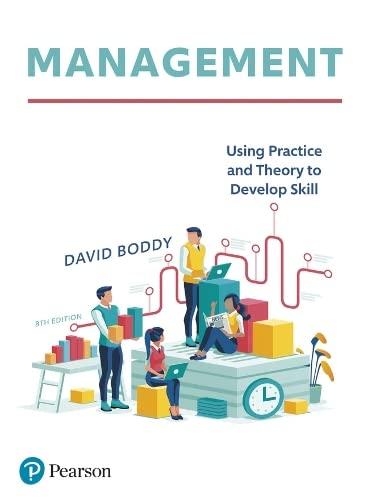Answered step by step
Verified Expert Solution
Question
1 Approved Answer
DQ14 1. Chairman Rogers asked Bob Lund: Why did you change your decision [that the seals would not hold up] when you changed hats? What
DQ14 1. Chairman Rogers asked Bob Lund: "Why did you change your decision [that the seals would not hold up] when you changed hats?" What might motivate you, as a midlevel manager, to go along with top management when told to "take off your engineering hat and put on your management hat"? Applying the engineering-as-experimentation model, what might responsible experimenters have done in response to the question? 2. Under what conditions would you say it is safe to launch a shuttle without an escape mechanism for the crew? 3. Discuss the role of the astronauts in shuttle safety. To what extent should they (or at least the orbiter commanders) have involved themselves more actively in looking for safety defects in design or operation? 4. Consider the following actions or recommendations and suggest a plan of action to bring about safer designs and operations in a complex organization. a. Lawrence Mulloy represented Marshall Space Flight Center at Cape Kennedy. He did not tell Arnold Aldrich from the National Space Transportation Program at Johnson Space Center about the discussions regarding the field-joint seals even though Aldrich had the responsibility of clearing Challenger for launch. Why? Because the seals were "a Level III issue," and Mulloy was at Level III, while Aldrich was at a higher level (Level II) which ought not to be bothered with such details. b. The Rogers Commission recommended that an independent safety organization directly responsible to the NASA administrator be established. An anonymous reporting scheme now exists for aerospace industry employees working on NASA projects. c. Tom Peters advises managers to "involve everyone in everything.... Boldly assert that there is no limit to what the average person can accomplish if thoroughly involved." 5. On October 4, 1930, the British airship R 101 crashed about eight hours into its maiden voyage to India. Of the 54 persons aboard, only 6 survived. Throughout the craft's design and construction, Air Ministry officials and their engineers had been driven by strong political and competitive forces. Nevil Shute, who had worked on the rival, commercial R 100, wrote in his memoir, Slide Rule, that "if just one of [the men at the Air Ministry] had stood up [at a conference with Lord Thomson] and had said, 'This thing won't work, and I'll be no party to it. I'm sorry, gentlemen, but if you do this, I'm resigning,' ... the disaster would almost certainly have been averted. It was not said, because the men in question put their jobs before their duty.,,31 Examine the R 101 case and compare it with the Challenger case, including the pressures not to delay the flight. During Columbia:5 last launch, chunks of foam were falling from the fixture that initially keeps the shuttle attached to the external fuel-tank. The foam prevents ice from forming and, when breaking off during launch, damaging at high acceleration the fragile thermal insulation of the shuttle's wings, especially at the critical forward edges. Such hits were generally not considered serious, only a maintenance problem. But not by Allen J. Richardson. In the 1980's had developed an analysis tool that showed otherwise. This view was shared by engineers from three NASA research centers and from three aerospace companies. A scenario that resembles the warnings issued prior to the Challenger unfolded. Recommendations that NASA ask the Columbia to be photographed during its orbits by the Defense Department or intelligence agencies using their specialty cameras were sidetracked and never carried out. In the meantime Rodney Rocha of NASA's debris analysis team felt powerless to get is superiors' attention. Examine news reports (e.g. www.cnn.com/SPECIALS/2003/shuttle) and more recent official reports to determine to what extent the shuttle disasters can be ascribed to engineers and managers had retired. How did experience get passed on-or not? Regarding the Challenger case, you may find material in addition to this Chapter 6 in the books by Rosa L. Pincus et al. and Diane Vaughan
Step by Step Solution
There are 3 Steps involved in it
Step: 1

Get Instant Access to Expert-Tailored Solutions
See step-by-step solutions with expert insights and AI powered tools for academic success
Step: 2

Step: 3

Ace Your Homework with AI
Get the answers you need in no time with our AI-driven, step-by-step assistance
Get Started


